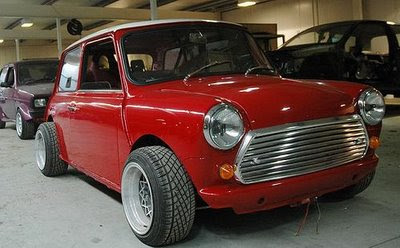MINI Cooper Cars Models Mini Clubman and 1275GT: 1969–1980 Parts 2
 10:35 PM
10:35 PM
 MINI Cooper Cars Blog
, Posted in
1275GT
,
Classic Mini
,
Mini
,
Mini 1275GT
,
Mini Cars
,
Mini Classic Cars
,
Mini Clubman
,
Mini Clubman 1275GT
,
Mini Cooper
,
Mini Cooper Cars
,
Mini Cooper Classsic Cars
,
Mini Cooper S
,
MINI Cooper S cars
,
0 Comments
MINI Cooper Cars Blog
, Posted in
1275GT
,
Classic Mini
,
Mini
,
Mini 1275GT
,
Mini Cars
,
Mini Classic Cars
,
Mini Clubman
,
Mini Clubman 1275GT
,
Mini Cooper
,
Mini Cooper Cars
,
Mini Cooper Classsic Cars
,
Mini Cooper S
,
MINI Cooper S cars
,
0 Comments
MINI Cooper Cars Models Mini Clubman and 1275GT: 1969–1980 Parts 2
Classic MINI Cooper Cars
MINI Cooper Cars Parts 1
The 1275GT is often incorrectly described as the "Mini Clubman 1275GT". The official name was always just the "Mini 1275GT", and it was a separate, distinct model from the Mini Clubman (albeit, it shared the same frontal treatment as the Mini Clubman, and was launched at the same time).
In 1971, the 1275 cc Mini Cooper S was discontinued in the UK, leaving the Mini 1275GT as the only sporting Mini on sale for the rest of the decade. Innocenti in Italy, however, continued making their own version of the Mini Cooper for some time. While the UK built 1275GT was not nearly as quick as a 1275 Mini Cooper S, it was cheaper to buy, run, and insure. It was the first Mini to be equipped with a tachometer. It also featured a standard-fit close-ratio gearbox. Performance of the 1275GT was lively for the time, achieving 0–60 mph (97 km/h) in 12.9 seconds, and the excellent midrange torque offered a 30–50 mph (48–80 km/h) time in top gear of only nine seconds. The bluff front, however, meant that the model struggled to reach 90 mph (140 km/h). The 1275 cc A-series engine could be cheaply and easily tuned, though the cheap purchase price and prominent "sidewinder" door stripes meant that this model developed a reputation as something of a "boy-racer special" during the 1970s and into the 1980s.
In 1971, the 1275 cc Mini Cooper S was discontinued in the UK, leaving the Mini 1275GT as the only sporting Mini on sale for the rest of the decade. Innocenti in Italy, however, continued making their own version of the Mini Cooper for some time. While the UK built 1275GT was not nearly as quick as a 1275 Mini Cooper S, it was cheaper to buy, run, and insure. It was the first Mini to be equipped with a tachometer. It also featured a standard-fit close-ratio gearbox. Performance of the 1275GT was lively for the time, achieving 0–60 mph (97 km/h) in 12.9 seconds, and the excellent midrange torque offered a 30–50 mph (48–80 km/h) time in top gear of only nine seconds. The bluff front, however, meant that the model struggled to reach 90 mph (140 km/h). The 1275 cc A-series engine could be cheaply and easily tuned, though the cheap purchase price and prominent "sidewinder" door stripes meant that this model developed a reputation as something of a "boy-racer special" during the 1970s and into the 1980s.




























.JPG)











